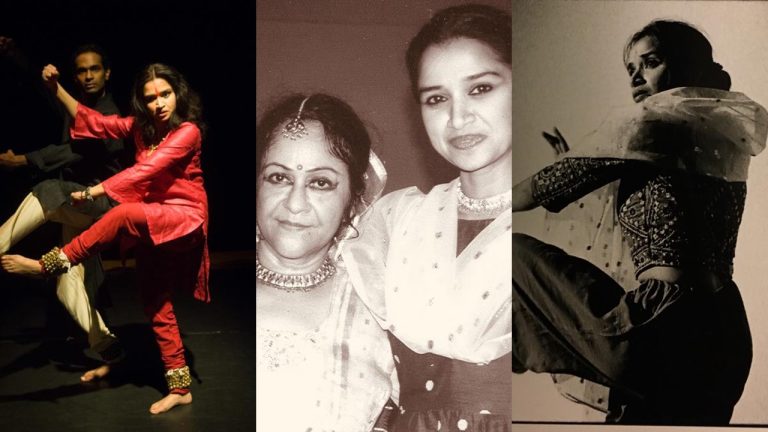History of Courtyard Dancers

Courtyard Dancers started as an impulse of a handful of women wanting to connect their ideas and critical thinking to dance. These women were: Pallabi Chakravorty, then teaching at Bryn Mawr College and Diditi Mitra, a graduate student; the students were Komal Amin, Anjali Alimchandani and Naina RoyChowdhury (a school student). CD made its professional debut at Goodhart Theater, Bryn Mawr College in April 2000. This event was largely self-produced with minimal funding. The one-hour event was a great success, drawing a crowd of about four hundred people. Since then CD’s works have been presented in prominent venues such as Philadelphia Museum of Art, PS 122 in New York, National Geographic Society in Washington D.C., Dance Place in Washington D.C., Painted Bride and Asian Arts Initiative in Philadelphia, Swarthmore College, and others. CD was a featured group in the first National Asian American Theater Festival (NAATF) held in New York City in 2007.

The themes for CD’s dance-theater pieces are inspired by the dynamic interconnections between local and global processes that give India and the Indian diaspora their shape. A selective list of CD’s repertoire includes: Silencing the Nautch (2000), Imagining Jamuna (2000), Threads (2002), Mahatma is Fasting (2002), Union/Dissolution (2005), Replaced Rituals (2007), Celluloid E-motions (2010), Unsung Arrival (2012). CD has collaborated with accomplished choreographers, dancers, theater artists such as Daniel Phoenix Singh, Nandini Sikand, Priyadarshini Ghosh and Ursula Nuenberg. Aqeel Bhatti is CD’s resident tabla player. The ensemble’s training in Kathak follows a combination of Lucknow and Jaipur gharana styles following the teachings of guru Bandana Sen and her disciples. CD is especially grateful to Padma Bhushan Kumudini Lakhia for her classes and workshops with them during 2012-2013. But CD’s artistic creations are their own. They speak and dance in a multitude of voices, push boundaries and open new spaces under the artistic direction of Pallabi Chakravorty (known as Jidi among CD).

